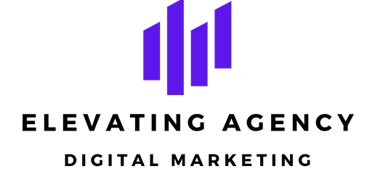From Clicks to Customers: Unlocking the Potential of PPC Advertising
A guide to creating high-performing ads that turn traffic into revenue.


Understanding PPC Advertising and Its Benefits
Pay-Per-Click (PPC) advertising is a digital marketing strategy in which advertisers pay a fee each time their ad is clicked. This model is primarily used to direct traffic to websites, acting as a cost-effective mechanism for gaining immediate visibility on search engines. Unlike traditional advertising methods that may result in extended delays before seeing measurable results, PPC campaigns can generate traffic promptly, often within the same day of launch.
The importance of PPC in the digital marketing landscape cannot be overstated. One of the most significant advantages of PPC is its ability to reach a targeted audience effectively. Advertisers can create highly specific campaigns that cater to demographics, locations, and interests, ensuring that their ads reach potential customers who are already searching for relevant products or services. This refined targeting enhances the likelihood of conversion, as the audience engaging with the ads is already predisposed to be interested in the offerings.
Measurable results also make PPC a powerful tool for marketers. Each click is tracked, allowing businesses to analyze the performance of their ads in real time. Metrics such as click-through rates (CTR), conversion rates, and return on investment (ROI) provide valuable insights that inform future marketing strategies. Additionally, PPC campaigns can be adjusted on the fly, enabling advertisers to optimize performance continuously based on instant feedback from audience interactions.
Moreover, PPC advertising is remarkably cost-effective. Brands can set budgets that suit their financial capabilities, paying only for actual clicks rather than impressions. This ensures that marketing efforts remain within budget while reaching a larger audience. Furthermore, PPC can complement other marketing strategies by driving traffic to websites, improving brand visibility, and contributing to overarching business goals.
Components of High-Performing PPC Ads
Pay-per-click (PPC) advertising success is largely contingent upon several key components, each playing a vital role in converting clicks into customers. The first crucial element is keyword research. Selecting the right keywords is foundational to optimizing PPC campaigns. This begins with identifying the terms and phrases that potential customers are using when searching for products or services relevant to your business. Utilizing tools like Google Keyword Planner can help in discovering new keyword opportunities and assessing their search volume and competitiveness. Long-tail keywords, which are longer and more specific phrases, often yield higher conversion rates due to their focused nature.
Once the appropriate keywords have been identified, effective ad copywriting becomes essential. The ad copy needs to resonate with the target audience while also incorporating the chosen keywords naturally. Key strategies include crafting a compelling headline that captures attention, using clear and concise language, and emphasizing unique selling propositions. A strong call to action (CTA) is also necessary to motivate users to click through to the landing page. For instance, phrases like “Get Your Free Quote Now!” can create a sense of urgency and drive engagement.
The importance of effective landing pages cannot be overstated. Once users click on the ad, the landing page is the destination that must convert visitors into leads or customers. A successful landing page should maintain consistency with the ad in terms of messaging and visuals. It should also be optimized for user experience, such as quick loading times, mobile responsiveness, and a clear layout. Incorporating elements like testimonials, case studies, or offers can further enhance conversion rates. By ensuring that all these components work together seamlessly, advertisers can significantly improve the performance of their PPC campaigns, leading to higher conversions and better return on investment.
Metrics and KPIs to Track for Optimization
When it comes to optimizing a PPC advertising campaign, understanding key metrics and Key Performance Indicators (KPIs) is essential. These measurements serve as a compass, guiding advertisers towards effective strategies and improved outcomes. Among the various metrics to monitor, four stand out as particularly vital: Click-Through Rate (CTR), Cost Per Click (CPC), Conversion Rate, and Return on Ad Spend (ROAS).
Click-Through Rate (CTR) is a crucial metric indicating the effectiveness of ad copy and targeting. It represents the ratio of users who click on an advertisement to the number of times it is shown. A higher CTR suggests that the advertisement resonates well with the audience and likely leads potential customers further down the sales funnel. In contrast, a low CTR may prompt a reevaluation of the ad's relevance or appeal.
Cost Per Click (CPC) is another indispensable metric, reflecting the average cost incurred for each click on an ad. Advertisers must balance CPC with their total budget to ensure optimal spending. A high CPC could signal fierce competition for specific keywords, which necessitates strategic adjustments, such as refining target demographics or exploring alternative keywords.
The Conversion Rate measures the percentage of users who take the desired action, such as making a purchase or signing up for a newsletter, after clicking the ad. A robust conversion rate indicates effective landing pages and meaningful calls to action. If the conversion rate is low despite a high CTR, it may highlight issues with the user experience post-click.
Finally, Return on Ad Spend (ROAS) evaluates the revenue generated for each dollar spent on PPC advertising. This metric helps advertisers assess the overall profitability of their campaigns and is invaluable for making data-driven adjustments. By consistently tracking these metrics and KPIs, advertisers can glean insights that lead to strategic optimizations, ultimately enhancing the effectiveness of their PPC campaigns.
Best Practices for PPC Campaign Management
Effective management of PPC campaigns is crucial for converting clicks into customers and achieving a solid return on investment (ROI). One of the best practices in PPC campaign management is the ongoing testing and refinement of ads. A/B testing different ad copies, images, and calls to action enables marketers to identify which elements resonate best with their target audience. Regularly analyzing ad performance metrics such as click-through rates (CTR) and conversion rates can provide insights that inform necessary adjustments, ensuring campaigns remain competitive and effective.
Budget management is another key aspect of successful PPC strategies. It is essential to establish a detailed budget that accounts for all facets of the campaign, including bidding strategies and ad placements. Implementing daily or monthly spending caps helps maintain control over expenditures while allowing flexibility to shift budget allocations based on performance trends. Furthermore, utilizing automated bidding strategies can optimize spending by adjusting bids in real-time based on the likelihood of conversions, enhancing overall campaign performance.
Retargeting is an effective tactic to encourage former visitors to complete their purchases. By using retargeting campaigns, advertisers can deliver tailored ads to users who previously engaged with their products, reminding them of what they left behind. This personalized approach not only nurtures initial interest but also increases the likelihood of conversions, thus maximizing the campaign’s efficiency.
Finally, adapting to changes in market conditions or consumer behavior is imperative for sustaining successful PPC campaigns. Staying informed about industry trends, seasonal fluctuations, and shifts in audience preferences allows marketers to pivot their strategies effectively. Through a proactive approach, such as incorporating new keywords or adjusting targeting parameters, businesses can ensure that their PPC efforts remain relevant and are optimized for the best results. Overall, consistent analysis and adaptation are essential for enhancing the ROI and turning clicks into loyal customers.


